Morrab Artist Residency Blog

February – June 2022
In October 2019, I approached Morrab Library with a proposal for a six-month artist’s residency, starting early 2020. It was my first ever residency, and I wasn’t sure what to expect outside the comfort of my studio. The library, situated in Penzance, not far from where I live, is one of the last 50 independent libraries left in the country, and the only one in Cornwall. For a moment, I wondered if a library, established in 1818, would accept my proposal and consider digital media. It is the home of 70,000 volumes of history, literature, art, biography, antiquities, poetry, and travel, with at least a quarter of their collections printed before 1901. There are no computerised checkouts, electronic barriers, and digitised filing systems, only real people who love interesting conversations. This makes it a rather unique and charming place to work in. But would they go for an animation and digital sound piece?
The response from the head librarian, Lisa di Tommaso, made me smile. “Anything that takes us into the 21st century will be wonderful.” The distinct lack of digital technology was hardly a romantic or purist choice.
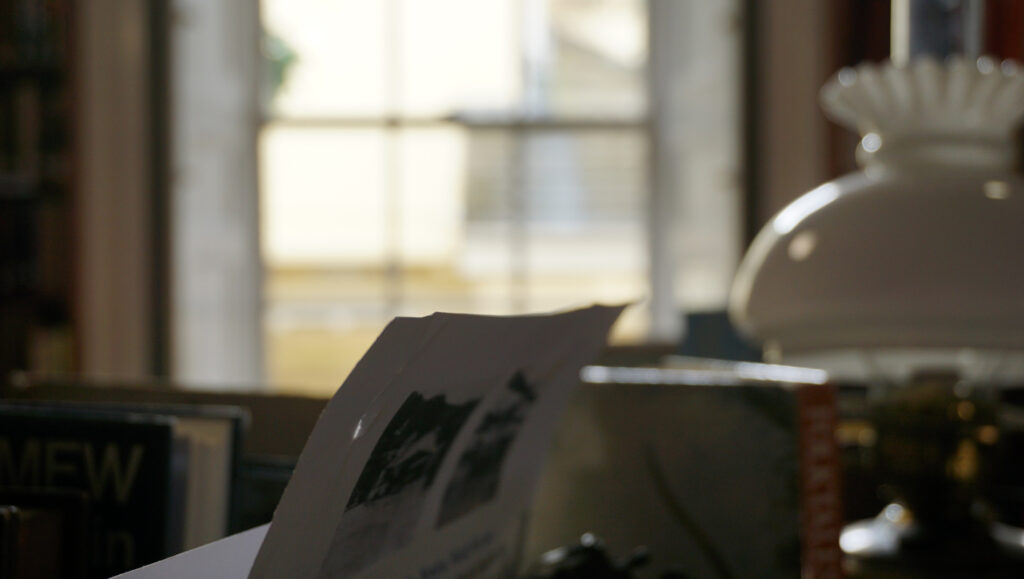
I gathered that catching up with the digital age is time-consuming and expensive. You need plenty of tenacity to make it happen, and I can only admire their doggedness.
Around the time I submitted my proposal, the PZ20 was being launched. The art festival provided a convenient timescale and framework for the residency, and as an independent visual artist, I was keen to get the library involved. We set the date for an exhibition in mid-June 2020, when the festival was in full swing.
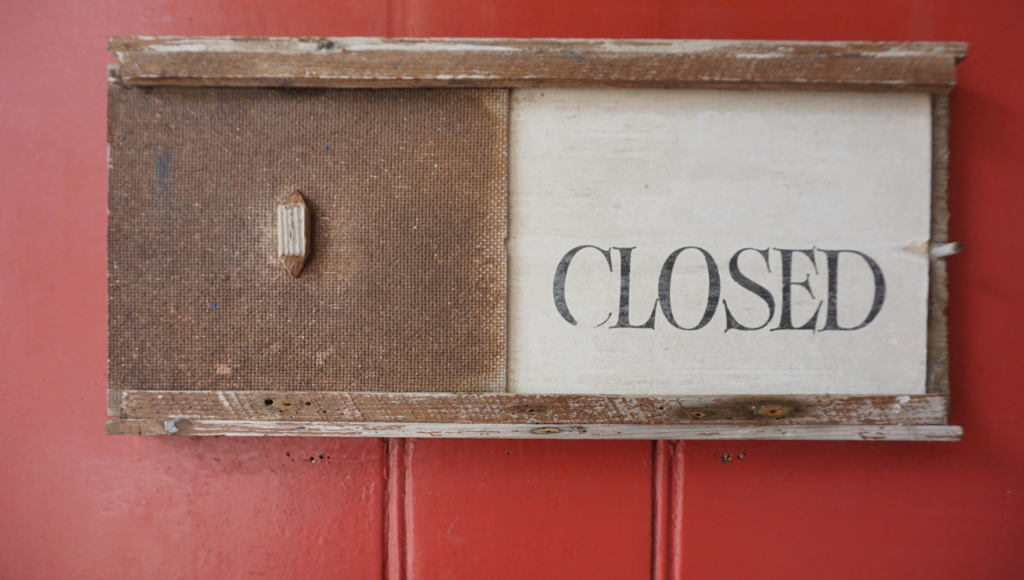
Then, in early 2020, as soon as I started, things came to a halt. COVID-19 and the lockdown brought the country to a standstill. It took quite some time, roughly two years, till the library was fully functioning again and I could resume my residency. Covid is still with us and occasionally plays havoc with our plans and best intention. It cut the six months’ residency down to four.
Despite Covid and funding cuts, the PZ22 Art festival was (and is) a step in the right direction. Penwith Art, with its plethora of artists, galleries and museums, deserves recognition. I felt privileged to represent Morrab Library alongside The Exchange & Newlyn Gallery, Newlyn School of Art, Penlee House, Penzance Studio, and many more at such significant event.
Morrab Library gave me access to their entire collections. I spent days wandering around the rooms and absorb the atmosphere. Nothing stopped me from reading, make drawings, take photos, record audio, contemplate my next move.

What kind of conversation was I looking for? Ideally, I imagined having lots of conversations with books, but didn’t know how to go about it. I had been tentatively pushing my work towards interactive digital media for a couple of years. The main outlet for my work are galleries and curated group exhibitons. Morrab Library promised a different audience: frightfully articulate and knowledgable individuals of all ages.
The extraordinary collection of books stacked up to the ceiling felt strangely overwhelming. As often with artist residencies, there is a desire for the unexpected to happen. You often hear of ‘purposeful playfulness’ being one of the main attraction. Unusual and engaging conversations between the artist and the new terrain are bound to happen eventually over time. I still worked from home, since Morrab Library is hardly big enough to accommodate their ever increasing collections, nevermind a dedicated studio space for an artist to work in. I didn’t mind.
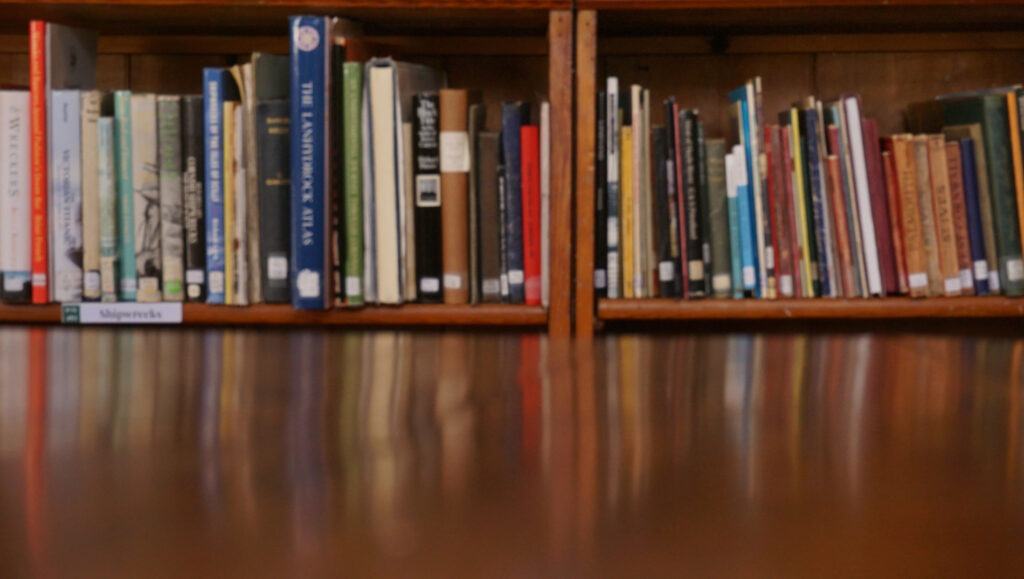

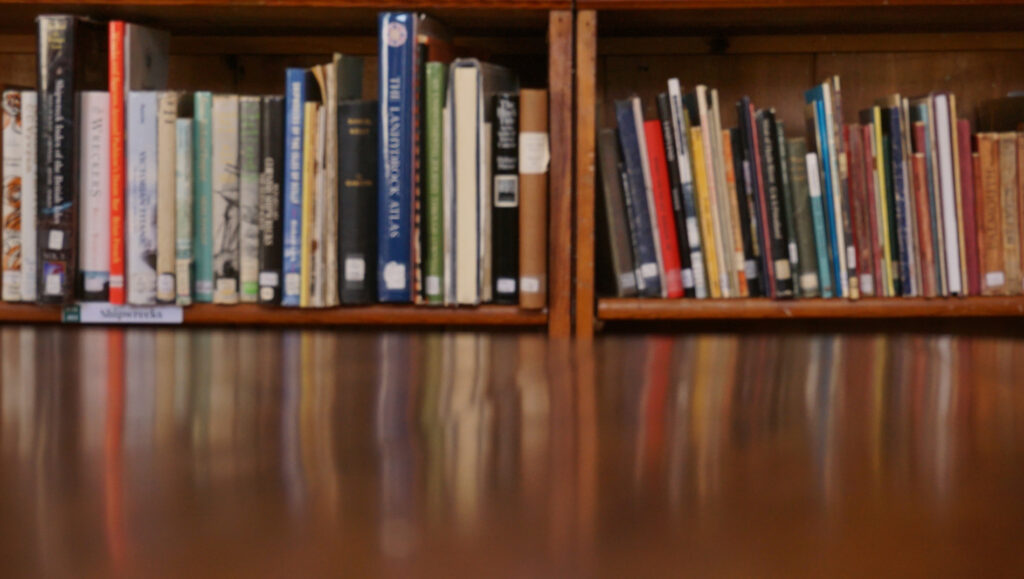
For me, books have personalities and a presence. Books might gather dust and become props over the years, yet their value to us as individuals or the generations to come in indisputable. Book lovers might agree they have a voice. I don’t mean the author speaking or Roland Barthes’ ideas on autonomous writings that dissolve the singular relationship between author and text. I simply felt that books were objects, waiting to be picked up and held by a willing reader; books want to inspire, share their words and knowledge, books have different voices: authoritative, poetic, creative, maybe arrogant and lecturing. How could I possibly accommodate their demands projected onto me? I felt inundated by their stories and words, and soon I forgot how to validate my unique language as a visual artist. No wonder I felt lost.
Then one day in the Poetry room, I picked up the rather familiar looking The Collected Poems by Kathleen Raine. (My copy at home is bright yellow.) Her words were a welcome reminder that personal empowerment and strength are actually in the hands of every individual. There was no reason to belittle my non-linear, bold, and fragile visual language in the presence of words.
I love to be a writer, but I speak through images. My voice simply got lost in translation.
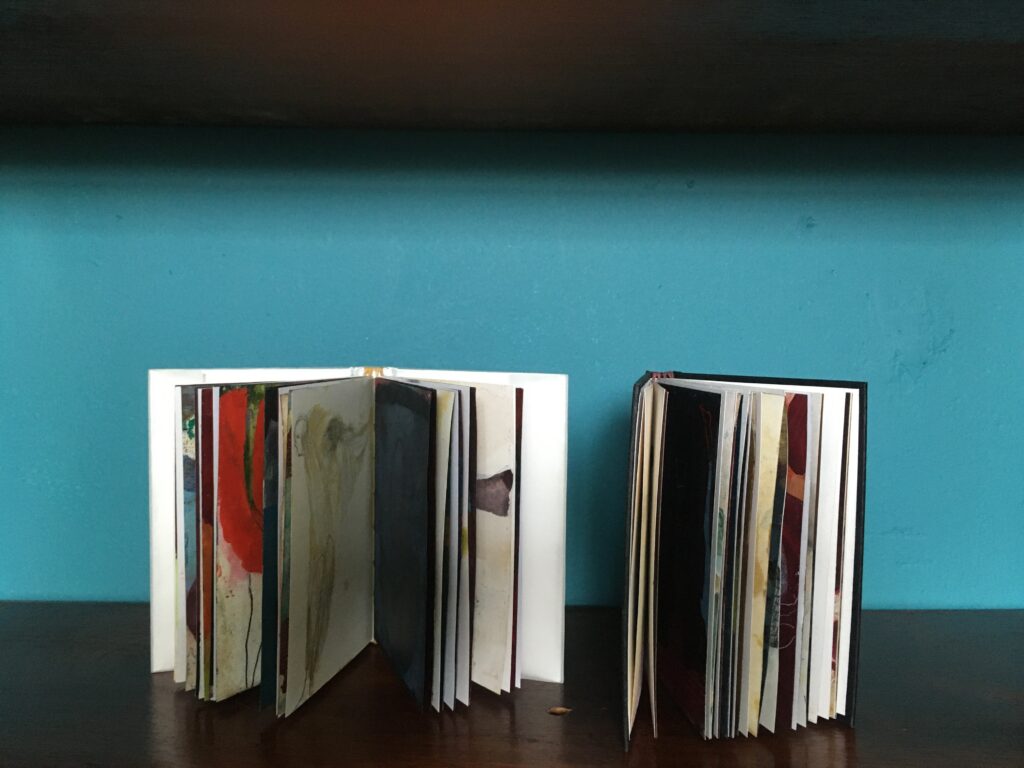
For the next few weeks, I spent my evening making two small hand-drawn and bound artist books: Little Book Without Words and Forgotten Realms. The books were a breakthrough. Yes, my voice was distinct and equal amongst the other imaginary voices in the library. Later, for the exhibition, I displayed the artist’s books on a bookshelf amongst the ‘Women of Cornwall’ in the Elisabeth Treffry Room.
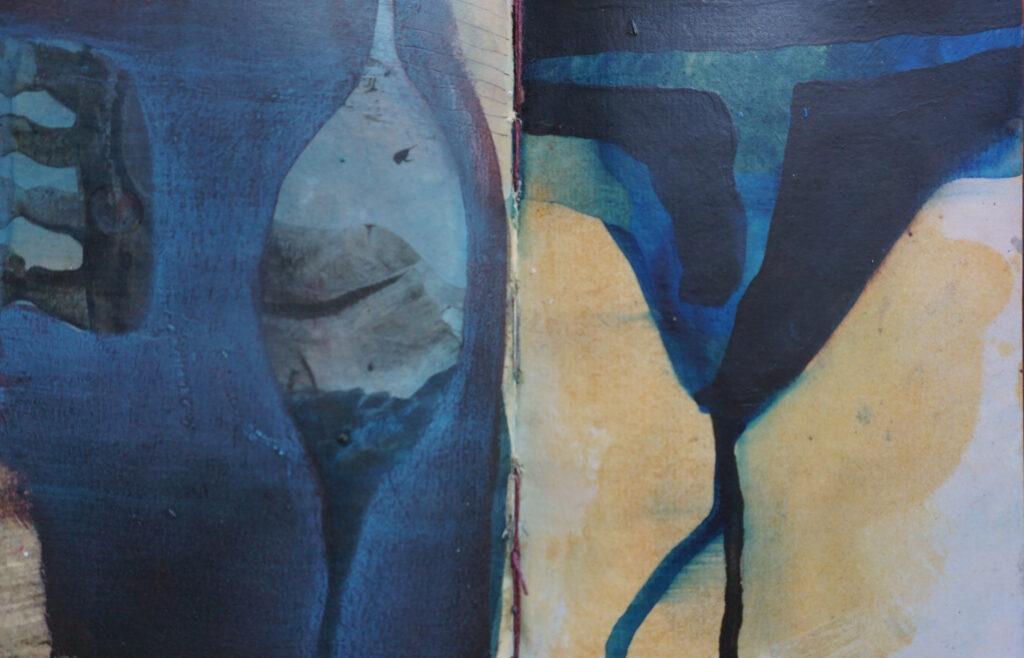
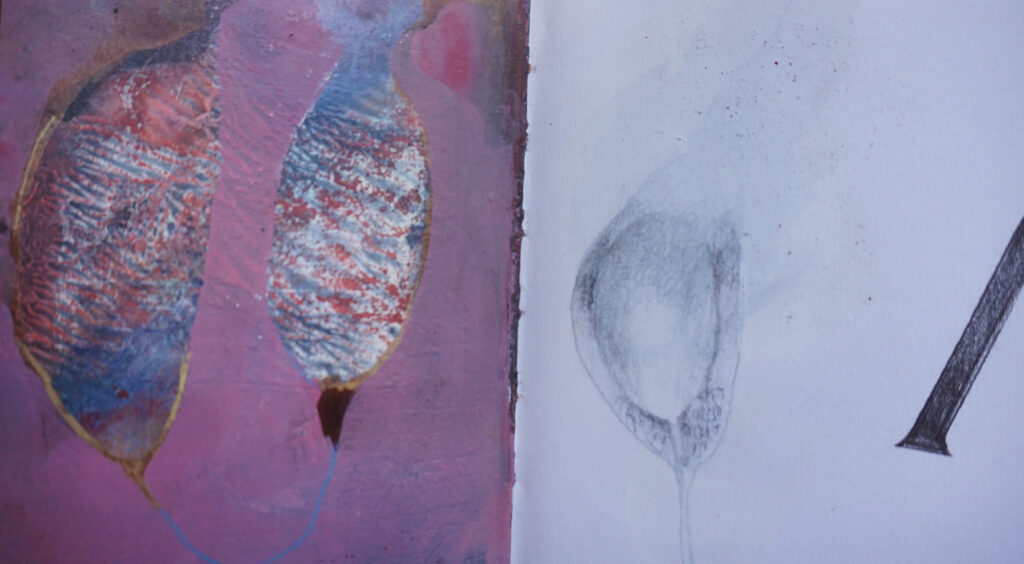
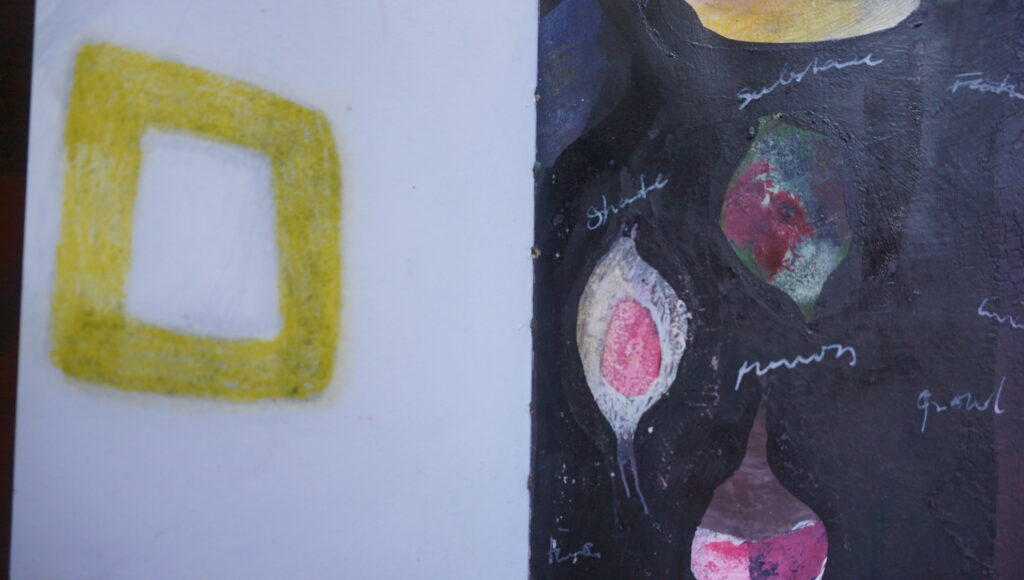
End of part one.
